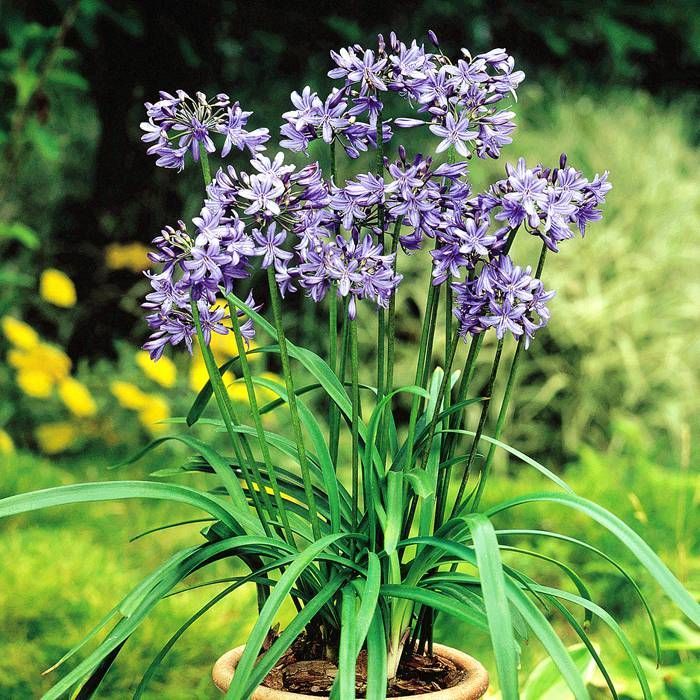Agapanthus Varieties: Picking the Best for Your Landscape
Agapanthus Varieties: Picking the Best for Your Landscape
Blog Article
Mastering the Art of Agapanthus Treatment: Important Actions for Healthy And Balanced Growth and Vivid Blooms
In the realm of gardening, the farming of agapanthus stands as a gratifying endeavor for those who seek to nurture these elegant blooming plants. From selecting the ideal selection to mastering pruning techniques, the trip towards growing prospering agapanthus plants is multifaceted and holds the vital to unlocking the full potential of these herb gems.

Picking the Right Agapanthus Selection

When picking the right Agapanthus selection for your yard, think about aspects such as environment viability, flower color, and development practice. Agapanthus, generally referred to as Lily of the Nile or African lily, is available in a range of colors varying from shades of blue and purple to white. Pick a flower color that complements your existing garden scheme to create a harmonious landscape. In addition, consider the climate in your region to guarantee the Agapanthus range you pick can grow in your certain conditions. Some ranges are a lot more forgiving of cold temperatures, while others prefer warmer environments. Recognizing the development routine of different Agapanthus ranges is essential for appropriate placement within your garden. Some selections have a clumping development practice, suitable for boundaries or containers, while others have an even more spreading nature, ideal for ground cover or mass plantings. By very carefully reviewing these aspects, you can pick the best Agapanthus range to enhance the charm of your yard.
Ideal Planting Conditions
Thinking about the optimal environmental needs is important for effective Agapanthus farming. Agapanthus plants are sensitive to chilly temperatures and ought to be secured from frost throughout wintertime months.
To make certain healthy growth and vivid flowers, plant Agapanthus light bulbs at a depth of regarding 2-4 inches and area them 8-12 inches apart. Adding raw material, such as garden compost, to the dirt can boost drainage and fertility, advertising robust root advancement. Mulching around the base of the plants assists retain wetness and subdues weed development. Regular watering is vital, specifically during the expanding season, to maintain the soil consistently wet yet not saturated.
Watering and Feeding Tips
Preserving correct wetness levels and supplying vital nutrients are vital elements in the treatment regimen for Agapanthus plants. When it comes to watering Agapanthus, it is essential to strike a balance. These plants choose regularly damp dirt however are susceptible to root rot if overwatered.
Fertilizing Agapanthus is essential for promoting healthy and balanced growth and respected blooms. Use a balanced plant food, such as a 10-10-10 formula, in the early springtime as brand-new growth emerges. By complying with these watering and feeding tips, you can ensure your Agapanthus plants flourish and produce lively, long-lasting flowers.
Pruning Techniques for Agapanthus
Trimming Agapanthus plants at the appropriate times and with proper techniques is important for keeping their wellness and promoting ideal development and blooming. The suitable time to prune Agapanthus is in late winter season or very early springtime prior to brand-new growth emerges.
Deadheading spent flowers can also reroute the plant's energy into producing more flowers instead than establishing seeds. If you desire to gather seeds for proliferation, leave some blossoms to mature and dry on the plant.
Bear in mind to make use of tidy, sharp tools to make accurate cuts and lower the danger of introducing diseases. Agapanthus. Regular trimming will help maintain your Agapanthus looking healthy and balanced and cool while ensuring a bountiful screen of beautiful blooms
Managing Usual Insects and Illness
After ensuring appropriate trimming methods for Agapanthus, it is important to deal with usual insects and diseases that can influence the health and vitality of these plants. Agapanthus plants are usually sturdy but can still succumb to certain problems. One usual pest that impacts Agapanthus is the Agapanthus gall midget. This little, orange fly lays its eggs in the vegetation, causing altered development and flower buds that fall short to open. To battle this insect, prune and ruin any afflicted plant parts and think about making use of insecticidal soap.
Another typical problem is fungal leaf area, which provides as dark lesions on the leaves. To stop fungal Going Here conditions, guarantee excellent air blood circulation around the plants, avoid above watering, and eliminate any infected fallen leaves quickly. Furthermore, Agapanthus plants can deal with origin rot if they are planted in badly draining pipes soil. To avoid this, plant Agapanthus in well-draining dirt and prevent overwatering. By being alert and taking punctual activity versus insects and illness, you can assist your Agapanthus plants prosper and create vivid blossoms.

Conclusion
In verdict, understanding the art of agapanthus care involves picking the appropriate variety, offering ideal growing conditions, proper watering and feeding, appropriate pruning techniques, and addressing typical parasites and diseases. original site By adhering to these essential actions, you can guarantee healthy development and vivid blossoms for your agapanthus plants. Remember to frequently keep an eye on and keep your plants to advertise their general wellness and longevity.
To make sure healthy and balanced development and lively blossoms, plant Agapanthus light bulbs at a deepness of concerning 2-4 inches and room them 8-12 inches apart. By following these watering and feeding suggestions, you can ensure your Agapanthus plants grow and create dynamic, long-lasting blossoms.
One common insect that impacts Agapanthus is the Agapanthus gall midge. Additionally, Agapanthus plants can suffer from origin rot if they are planted in inadequately draining pipes soil. By following these essential get more steps, you can ensure healthy and balanced development and vibrant flowers for your agapanthus plants.
Report this page